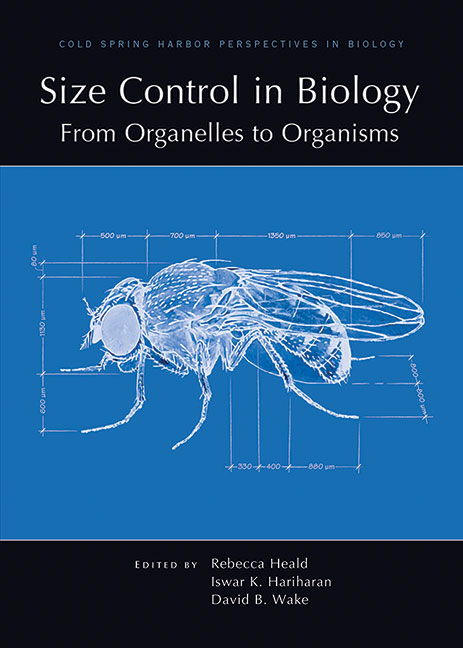New book on ’Size Control in Biology,’ from Cold Spring Harbor Laboratory Press
09/16/2015
Size is a primary feature of living things. From the egg to adult, the various organs, tissues, cells, and subcellular structures that make up an organism achieve appropriate sizes so that they effectively fit and function together. The misregulation of this growth can lead to diseases such as cancer. Written and edited by experts in the field, Size Control in Biology: From Organelles to Organisms, from Cold Spring Harbor Perspectives in Biology, examines our current understanding of the intrinsic and extrinsic mechanisms that precisely regulate the sizes of biological structures so that they can function efficiently in their cellular, organismal, or ecological context. Contributors discuss the genetic, hormonal, and environmental inputs that trigger cells to grow, divide, or die, the various signaling pathways involved, and how these determine the final body size of an organism and the proportions of its component tissues and organs. Size-sensing mechanisms that enable cells to maintain their optimal sizes are reviewed, as are the scaling mechanisms that organelles use to adjust their sizes in response to changes in cell size. Examples from across the tree of life--from bacteria to humans--are provided. The authors also describe the mysteries that still remain about cell size and its control, including the nature of the intriguing relationship between nuclear DNA content and cell size. This volume will therefore be fascinating reading for all cell, developmental, and evolutionary biologists. |  IMAGE: Blueprint of Drosophila melanogaster by Joseph Hill (hilljj.com). CREDIT:Figure is adapted from a rendering by Joseph Hill that appears on the laboratory website of Dr. David Bilder, University of California, Berkeley (mcb.berkeley.edu/labs/bilder/). Copyright held by Dr. Bilder, used with his permission.
|
 Cold Spring Harbor Laboratory Press Bookstore
Cold Spring Harbor Laboratory Press Bookstore

